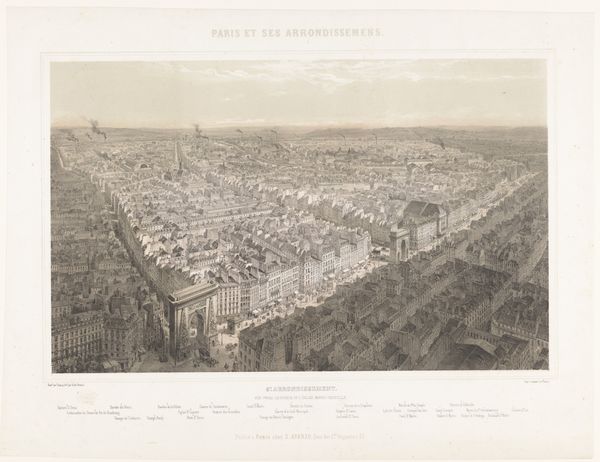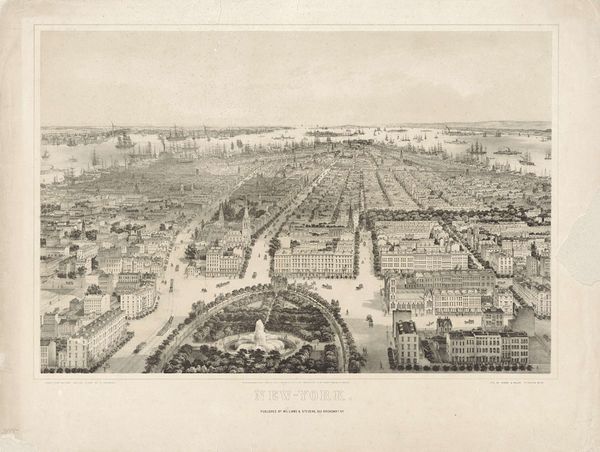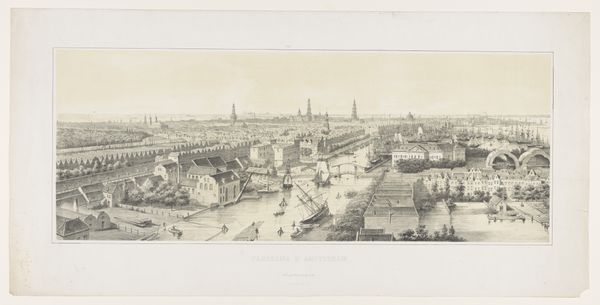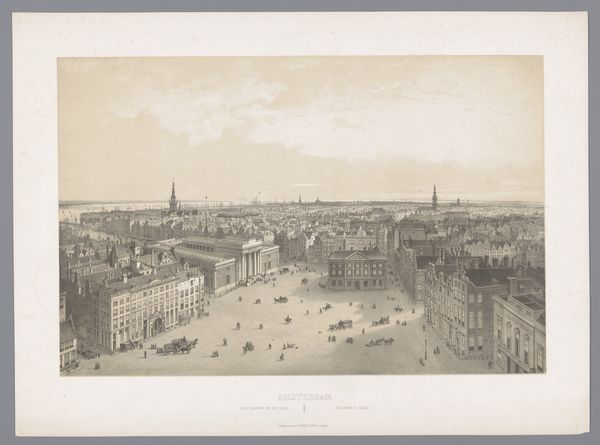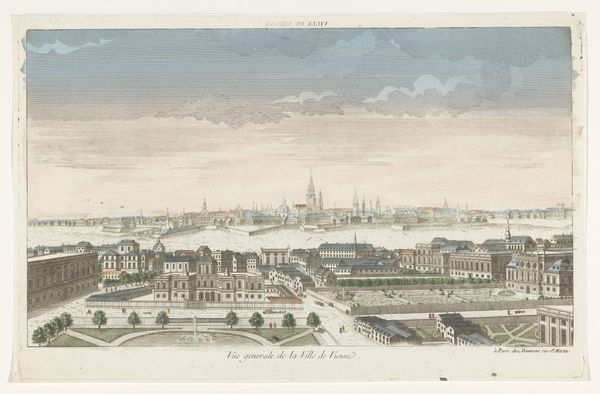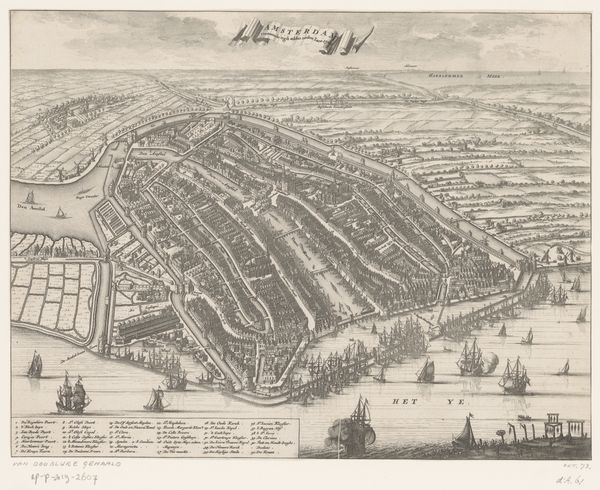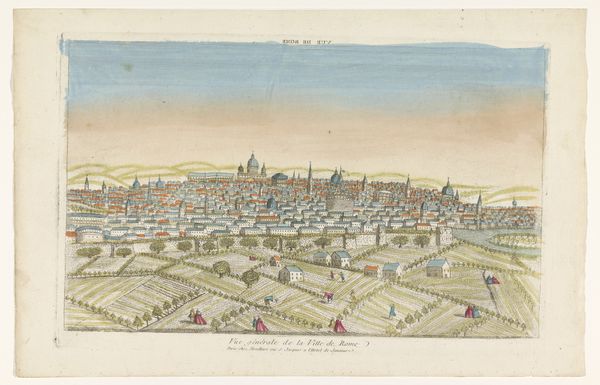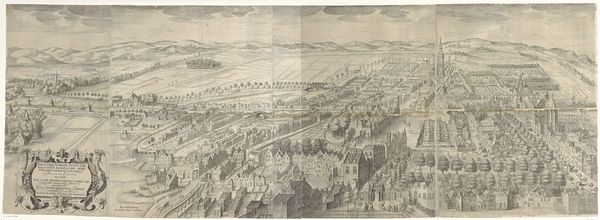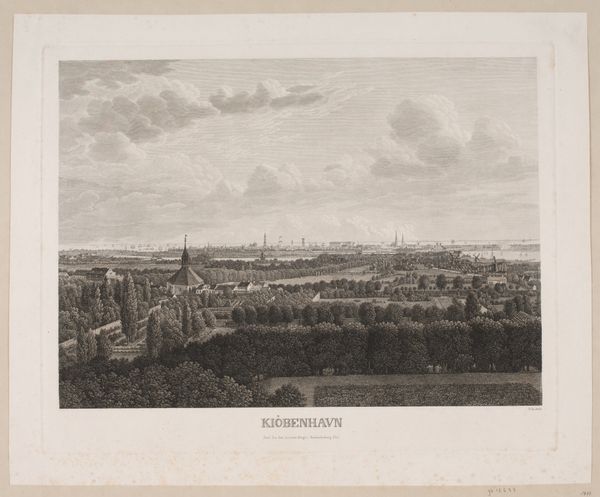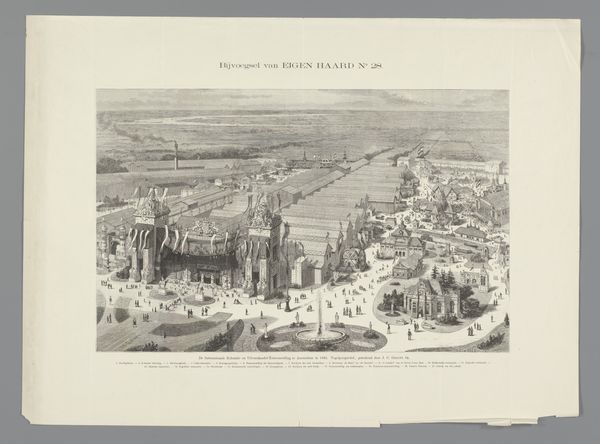
#
photo of handprinted image
#
light pencil work
#
pale colours
#
photo restoration
#
natural tone
#
light coloured
#
repetition of white
#
white palette
#
repetition of white colour
#
watercolor
Dimensions: height 385 mm, width 525 mm
Copyright: Rijks Museum: Open Domain
Curator: This delicate rendering shows us the Sixth Arrondissement of Paris. It's from 1850 and is credited to Louis Jules Arnout. Editor: My initial impression is of incredible precision, almost unsettlingly detailed. It's as though every rooftop and street corner is meticulously accounted for, giving it a strangely clinical feel. Curator: The artist must have dedicated immense time and skill to capture the sheer breadth of the cityscape, which also demanded a highly specialized level of artisan printing at that time. Consider the economic conditions for this artwork. I mean, what does it mean to produce it? To consume it? How were these images sold or given away? Editor: From a formal perspective, I find the tonal range fascinating. The restrained palette focuses the eye. There are very few distinct contrasts. Notice how Arnout has established a pictorial syntax with such subtle modulations? It generates an impressive aerial effect. Curator: True, but it also offers a glimpse into 19th-century urban planning, reflecting the rapid changes that defined the city. You have new boulevards and buildings reshaping daily life, alongside the development of print media and visual culture which allowed for easier ways to communicate this process. Editor: Beyond its historical significance, there's also something timeless about it. The geometrical perspective, the way the buildings recede into the hazy horizon—it creates an intriguing composition. It's a masterful construction. Curator: I'm more inclined to focus on what this artwork reveals about labor, industrial advances, the conditions of artistic creation, and the access that Parisians, both then and now, had to view such advancements in print. Editor: An aerial vantage point offers, literally, an elevated position. One of intellectual and perhaps, ideological distance? Interesting to consider it along those lines. Curator: Absolutely, it encapsulates the spirit of an era undergoing constant change. We can spend ages tracing it back to the moment of its creation and initial consumption, can't we? Editor: Precisely. Arnout gives us an opportunity for a concentrated look at Parisian modernity through both artistic strategy and subject.
Comments
No comments
Be the first to comment and join the conversation on the ultimate creative platform.
